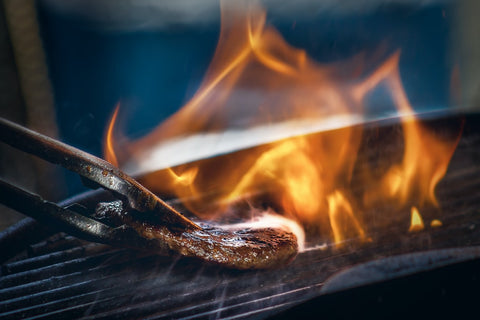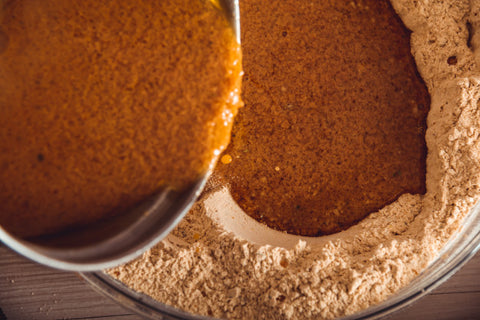What Is Seitan? Where Do I Find It In India?

Are you a vegetarian searching for a meat alternative to incorporate into your diet? The concept of "wheat meat" has been in existence for quite a while. Nevertheless, it is only in recent times that this meat substitute has come to be known as Seitan.

In spite of its wheat origin, Seitan bears no resemblance to bread or other wheat-based products. It is comprised solely of gluten and water, making it notably low in carbohydrates and fats while being exceptionally rich in protein. By utilizing Seitan, vegetarians and vegans can create meat-inspired dishes without the inclusion of actual meat.
Within this article, you will discover the nature of Seitan, its historical roots, the advantages it offers, and step-by-step instructions on how to prepare it in the comfort of your own home.
Seitan
Seitan is the term commonly used within vegetarian, vegan, whole-food, and macrobiotic communities to refer to wheat gluten.
Wheat gluten is composed of the primary protein found in wheat. It is produced by washing dough made from wheat flour with water, which effectively removes the starch particles. The outcome of this process is an insoluble, elastic mass known as gluten. Subsequently, the gluten is thoroughly cooked to render it suitable for consumption.
While soybean-based meat alternatives such as Tofu have been recognized for their health benefits for quite some time, awareness of Seitan has also been growing. Many individuals refer to Tofu as vegetarian meat due to its texture and mouthfeel. However, certain variations of Seitan offer an even better texture and a chewy nature compared to Tofu. Consequently, numerous Asian restaurants utilize Seitan to create meat-like dishes. A popular example is Mock Duck, a dish crafted using Seitan.

Origin of Seitan.
The origins of Seitan, also known as wheat gluten, trace back to the 6th century AD when Buddhist practitioners began incorporating it as a meat alternative in various dishes. The earliest recorded mention of wheat gluten dates back to 535 AD when Jia Sixie documented its usage in his agricultural encyclopedia. Sixie described how wheat gluten was employed in the preparation of a special type of noodles known as "Bo duo."
However, the term "Seitan" itself is relatively more recent compared to the ingredient's use in Chinese noodles. It was coined in 1961 by George Ohsawa, a Japanese advocate of the macrobiotic diet, to refer to a wheat gluten product developed by his student, Kiyoshi Mokutani.
In 1969, the American company Erewhon began importing this product to the United States, leading to Seitan gaining popularity in the Western world.

Benefits of Eating Seitan
Advocates of vegan cuisine often highlight the multitude of advantages associated with Seitan. This meat substitute is renowned for its high protein content and low carbohydrate levels. Nonetheless, consuming a diet solely composed of gluten may present certain drawbacks, particularly for individuals with autoimmune conditions. However, for the majority of people (myself included), gluten has no discernible impact on the body.
Several key benefits of Seitan include:
Highest protein content when compared to any food on the planet (including meat)
By consuming a mere one ounce (28g) of Seitan, you can obtain approximately 104 calories and a remarkable 21g of protein. This means that protein accounts for approximately 75 percent of Seitan's composition. If you aim to adopt a vegetarian diet that is abundant in protein, incorporating Seitan into your list of preferred foods would undoubtedly be a beneficial choice.
It has Other Essential Minerals
Upon closer examination, it becomes apparent that Seitan contains minute amounts of copper, selenium, iron, phosphorus, and calcium. These essential minerals are required by our bodies in modest quantities to ensure the optimal functioning of our systems.
Low on Carbs and Fats
With a mere 4g of carbohydrates and 0.5g of fat, Seitan is an essential addition for individuals striving to maintain a balanced macronutrient intake.
It's important to note that the nutritional information provided pertains specifically to pure Seitan. Commercially available products may exhibit variations in their nutritional composition, as Seitan manufacturers often incorporate additional ingredients to enhance its flavor and texture.
Who Should Avoid Seitan?
For individuals with soy allergies, Seitan can prove to be a highly advantageous alternative. Nevertheless, before incorporating Seitan as a fundamental component of your diet, it is advisable to take the following factors into consideration.
If you avoid processed food:
To begin with, it's important to note that Seitan is a processed food product. The process involves thoroughly washing the starch from kneaded wheat flour to create Seitan. However, it is worth mentioning that Seitan does not contain high amounts of saturated fats or preservatives, which distinguishes it from other types of processed foods. Consequently, its potential harm to health is relatively lower.
If your dietary preferences primarily consist of fruits, vegetables, whole grains, nuts, and similar unprocessed items, incorporating Seitan into your diet can be a beneficial choice. However, if you consume a significant amount of processed foods, exploring alternative options to Seitan may be worth considering.
People Who Are Allergic to Gluten
The second concern regarding Seitan is its composition, which is primarily pure gluten. Consequently, individuals with gluten allergies or sensitivities should refrain from consuming Seitan. If you happen to suffer from Celiac disease, it is crucial to avoid Seitan altogether. Additionally, it is worth noting that pre-packaged Seitan products often contain elevated levels of sodium.
People Who Suffer from “Leaky” Gut
In excessive quantities, Seitan could potentially have negative effects on gut health. Individuals who do not have any gut-related disorders typically possess a well-regulated intestinal permeability. This regulated permeability ensures that food particles can pass through to the bloodstream without complications. However, some individuals may experience a condition known as "leaky gut," where the intestinal permeability is not properly regulated. This can lead to complications when consuming certain food items, including Seitan. If you suspect you may have a leaky gut or are experiencing symptoms of irritable bowel movement, it is advisable to consult with a nutritionist or refer to a suitable plan for guidance, such as the one provided in the link.
Where to Get Seitan in India and What are the Popular Seitan Dishes?
For those residing in or near Bangalore, the optimal destination to acquire raw Seitan or indulge in Seitan-based delicacies is the esteemed establishment known as the House of Seitan.
However, if you reside in any other major city in India, your most reliable option for discovering Seitan-based food items would be well-known vegan food establishments and stores specializing in mock meat. Notably, the widely recognized chain of Burmese restaurants called Burma Burma, which operates across India, offers a delightful array of mock meat dishes crafted from Seitan as part of their enticing menu.

Across Asia, various cultures have distinct methods of preparing Seitan-based dishes. Here are some popular ways in which Seitan is served around the world.
In China, wheat gluten is known as "miàn jīn." It was originally developed by Buddhists as a meat substitute in traditional Chinese cuisine. One popular Chinese preparation involves tearing Seitan into small pieces and deep-frying them to create fluffy balls. These golden-brown balls are then incorporated into stews or soup dishes. It is common to find dishes that combine Seitan balls with black mushrooms, creating a flavorful combination.

Popular Dishes Made using Seitan
For those seeking a healthier alternative to Seitan, steamed gluten might be worth exploring. In China, it is common to encounter elongated sausage-like pieces of Seitan in various establishments. This particular type of Seitan boasts a dense texture and exhibits a slightly murky whitish to greenish-grey color. Typically, the sausage-shaped Seitan is torn open into strips before being incorporated into different dishes.
Another variant of Seitan known as "kǎo fū" involves baking it into a sponge-like product. This is achieved by leavening raw gluten followed by either baking or steaming. The sponge-like structure of "kǎo fū" allows it to absorb juices and imparts diverse flavors based on the accompanying ingredients or soup used for serving.
Making Seitan at Home
In the event that it is difficult to find stores or restaurants offering Seitan in your city, you have two options: you can either purchase Seitan from online stores or prepare it in the comfort of your own home. Making your own Seitan at home is a viable alternative and there are various methods to choose from. To help you get started, here is a video tutorial that provides step-by-step instructions for making Seitan.
To create Seitan in your own kitchen, you'll need a starter kit along with a few additional ingredients.
Begin by obtaining vital wheat gluten, which is typically included in the starter kit. It usually comes in powdered form. To enhance the taste and texture, add 1/4 cup of chickpea flour or soy flour to the vital wheat gluten.
Next, add 1 cup of water to the mixture and thoroughly knead it until the dough attains the distinctive Seitan texture. This involves kneading the dough until gluten strands start to develop.
Once you achieve a meat-like texture, you are ready to prepare your desired dish. For a healthier option, you can bake the Seitan, or if you prefer, you can fry it in the form of balls.
To serve the Seitan, you have multiple options. You can choose to present it as is with some garnishing, or incorporate it into a soup or stew to infuse flavor into the Seitan. Personally, I enjoy marinating bite-sized Seitan balls in a stir-fry sauce for a few hours before air frying them at 180 degrees Celsius for 8-10 minutes.
Conclusion
The cooking method or presentation of Seitan is not a significant concern unless you are specifically avoiding oily foods. Incorporating Seitan into your diet offers numerous benefits and can be a valuable ingredient for a healthy eating plan. However, before you embark on preparing Seitan and experimenting with various recipes, it is essential to determine if you have any allergies or sensitivities to gluten.


